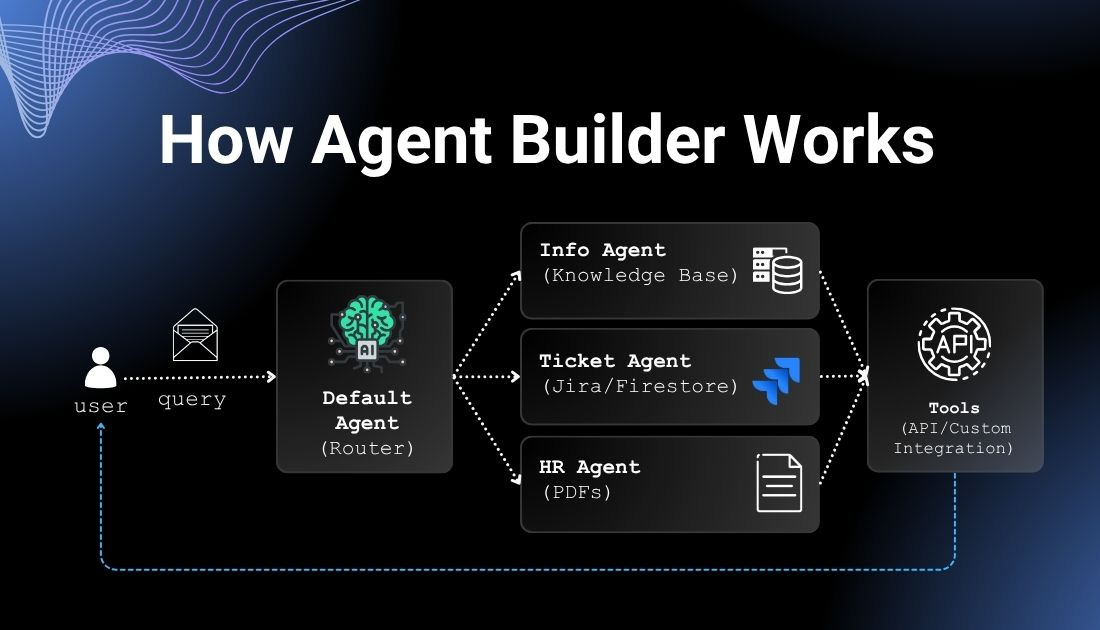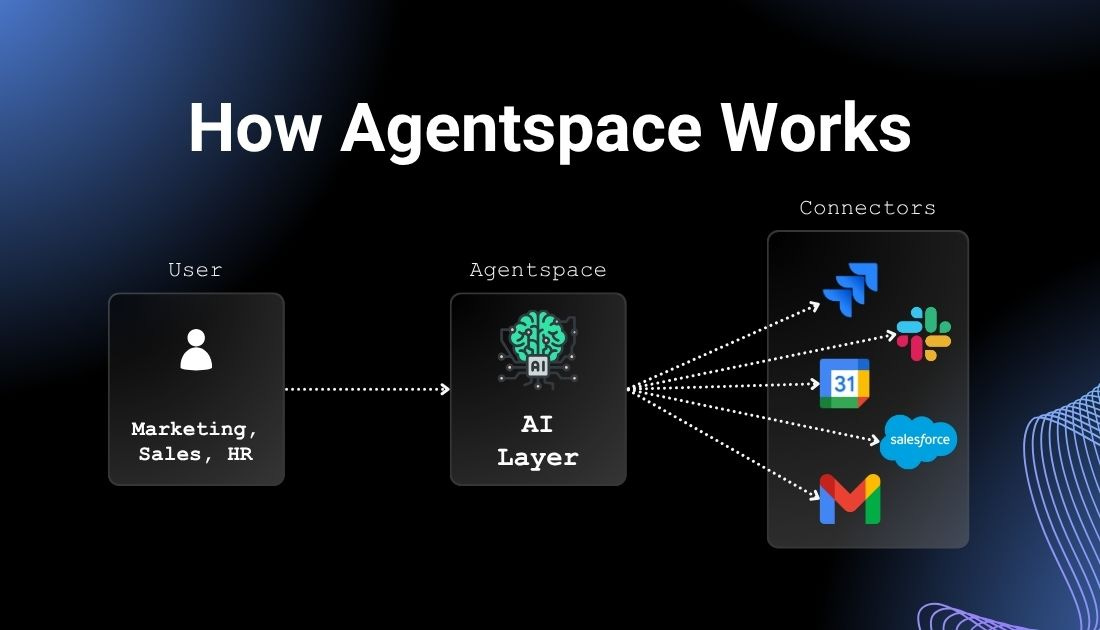Agent Builder vs Agentspace: What You Actually Need
Let me tell you a story.
We were knee-deep in another “AI transformation” project. The client had three goals: reduce support ticket response time, boost employee productivity, and stop losing information across Slack, Jira, Salesforce, and SharePoint. Classic.
They started with a chatbot. It answered FAQs. Kind of.
Then came Agent Builder—suddenly, their internal IT assistant could actually file tickets, read knowledge bases, and talk to humans like it had some sense. Cool stuff. Until marketing, HR, sales, and ops all wanted in.
That’s when Agentspace entered the room.
So let’s break it down. If you’re wondering what the real difference is between Google Cloud’s Agent Builder and Agentspace—and more importantly, which one you actually need—you’re in the right place.
What is Agent Builder?
Agent Builder is your AI lab bench. It’s where you build smart internal assistants tailored to your company’s specific workflows.
Want a bot that can look up HR policies in a PDF? Easy. Need one that logs IT tickets to Firestore through a Cloud Function? Done.
You can create multi-agent systems, each handling a unique task. A Default Agent routes queries. An Info Agent answers questions. A Ticket Agent files stuff. You control the logic. You define the tools. You wire it all up.
This is your playground if you're:
A startup or mid-sized business looking to automate internal workflows.
A team with strong dev support that wants control over how agents behave.
Focused on one domain (e.g., IT helpdesk, HR assistant, internal policy bot).
It’s a builder’s dream. But also? It’s very build-it-yourself. You need time, a good understanding of Google Cloud, and ideally, someone who enjoys reading API docs over lunch.
Agent Builder Pros:
Complete control over agent behavior.
Build specialized multi-agent systems.
Integrate with any system using Open API or custom tools.
Great for internal tools and specific-use assistants.
Limitations:
Doesn’t come “pre-connected” to your data.
Scaling across the company? That’s a lot of agents to manage.
Agentspace: Your Unified AI Work Assistant
Now, Agentspace is a different beast.
Instead of building bots from scratch, Agentspace acts as a universal, secure search and generation layer across all your tools: Slack, Salesforce, Confluence, Jira, Gmail, Drive, Tableau—you name it.
It’s the AI coworker you wish you had. You ask, it searches. You dig deeper, it follows the thread. You need a doc, it writes it. You need an answer, it explains it. It even shows you where it got the info.
There’s no configuring APIs or building agent routing logic. You just… use it.
What Can Agentspace Do?
Ask questions like:
“Who’s the PM for Project Firehawk?”
“What’s the client’s feedback on last quarter’s delivery?”
“Summarize this 30-page RFP for me.”Generate content: Blog posts, exec summaries, marketing docs, images for campaigns.
Perform research: Its Research Agent searches both your internal docs and the web. Then it writes a full report, summary included. Heck, it even gives you an audio version.
Follow up: Ask it to go deeper, or spin up a new document based on results.
And yes, it’s secure, private, enterprise-grade, and has fancy role-based access controls and data residency guarantees.
Agentspace Pros:
No setup needed—it just works with your enterprise data.
Fully integrated with Google tools and 3rd-party platforms.
Perfect for cross-functional teams needing knowledge synthesis.
Allows generative Q&A, summaries, content creation, and even actions (like sending emails).
Limitations:
Less customizable than Agent Builder.
You don’t “build” agents—Agentspace is the agent.
Better for broad, organization-wide use—not deep, function-specific automations.
When Do You Outgrow Agent Builder?
Agent Builder is ideal for focused, internal automations. But once every team in the company wants a smart assistant? It gets messy.
Here’s what I suggest you choose based on your goals:
Real-World Example: What This Looks Like in Action
Let’s say your marketing team wants to generate a competitive analysis of your product vs others in the market.
With Agent Builder: You’d need to build an agent, hook it up to a data store, manually input documents, then possibly use a large language model to analyze and summarize. It’s doable, but it’s a project.
With Agentspace: Just ask: "What are our product differentiators compared to XYZ?"
It’ll pull info from Salesforce, product docs, Slack convos, maybe even Confluence, and then give you a detailed answer with citations. You want a follow-up image for the pitch deck? Done. Blog post? Sure. Summary for the exec team? Already in your inbox.
Final Thoughts From a CTO Who's Been There
Agent Builder is like building a custom robot to fix one problem.
Agentspace is like hiring an AI coworker who knows where everything lives and actually answers your emails.
Both are powerful. Both are Google-native. And if you're a growing business with teams swimming in data chaos, Agentspace will feel like magic.
But don’t sleep on Agent Builder—it’s still the best option when you need precision-engineered automation. We've used both, and at Zazmic, we help companies figure out which makes sense based on your setup, your data, and your goals.
Ready to Get Started?
Join our FREE AI Workshop.
We’ll help you map your AI use cases, explore both Agent Builder and Agentspace, and build out actual POCs tailored for your business, your team, and your industry.
Bring your questions. Leave with clarity (and maybe a prototype).






